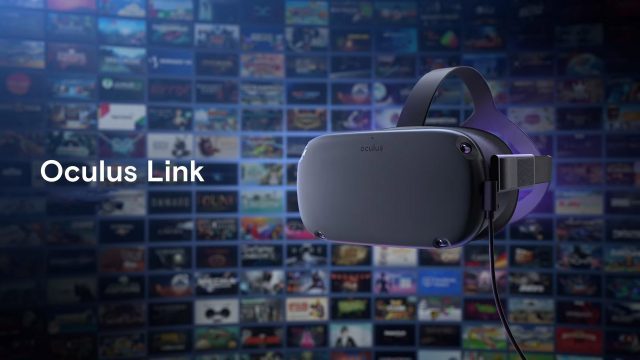Although Facebook is discontinuing its PC-only Rift product line, the company says that PC VR content will live on thanks to Oculus Link, which allows Quest and Quest 2 to tether to a VR ready PC and play high-end content. To that end the company is planning a range of upgrades to improve the Oculus Link experience for both headsets.
Oculus Link Upgrades for Quest 2
Though Quest 2 has a lot more power and a higher resolution display than its predecessor, the Oculus Link experience at launch will be little different than what you see on Quest today—it’ll run at 72Hz and at original Quest resolution.
At some point “soon” after launch, according to the company, Oculus Link will be upgraded to take full advantage of Quest 2’s hardware.
For one, the company says Oculus Link will run at 90Hz on Quest 2, and the video encoding will be optimized for headset’s higher resolution. The company is also working to enable Quest’s mobile ASW tech with Link, which could both reduce latency and off-load some of the rendering work to Quest’s mobile processor while freeing up a bit more power on the PC for better rendering performance.
Oculus says that Link will leave its ‘beta’ status behind this Fall, but there’s more upgrades to come. Next year, Oculus tells us, the Link software experience will be natively integrated into the Quest interface.
Oculus Link to be Directly Integrated into Quest Interface


Today, when you plug Quest or Quest 2 into your PC, the PC basically treats it like a Rift headset—you see the Rift’s ‘Dash’ interface and the Oculus PC game library. But that means you’re cut off from the rest of the Quest system experience, and you’ll be juggling two wholly different interfaces.
In the future, Oculus plans to integrate the Link experience directly into the Quest interface. Rather than seeing the Rift interface, Link will bring the PC library into the Quest interface, similar to how it presents native games. That means users can continue to use Quest features like hand-tracking, voice commands, and the universal menu.
We’d expect that, for Link users, the Quest library page will populate with a list of the user’s PC-based VR apps. If the user tries to launch one of the apps without already being plugged into their PC, the system would prompt them to connect their Link cable.
Ultimately this will allow Quest users to use Link in a much more seamless way, allowing them to jump back and forth between native and PC-based applications as if they were one in the same.
The move makes sense from an experience standpoint and also aligns with the company’s decision to discontinue the Rift product line. Ultimately, it heralds the eventual end of the Rift ‘Dash’ interface which has languished in comparison to the many updates that Oculus has heaped onto Quest. Since the company won’t be making PC-only VR headsets in the future, it makes sense to deprecate the PC interface and move to a more unified interface which is built directly into the Quest experience.
Currently, Link allows Quest and Quest 2 to work with both the Oculus PC platform and other PC VR platforms like SteamVR. It’s not clear how this would be impacted by a direct interface integration, but we’ve reached out to Oculus for comment. Update (October 12th, 2020): Oculus says SteamVR compatibility with Oculus Link won’t be impacted by interface changes.
Oculus Link Not Wireless Yet
Oculus has said on multiple occasions that it would like to eventually make Oculus Link wireless, but the company hasn’t announced any news on that front beyond saying that they’re still looking into it. The company has proposed that such a solution could run directly over existing home Wi-Fi routers or potentially a USB dongle that would plug into the user’s PC.

